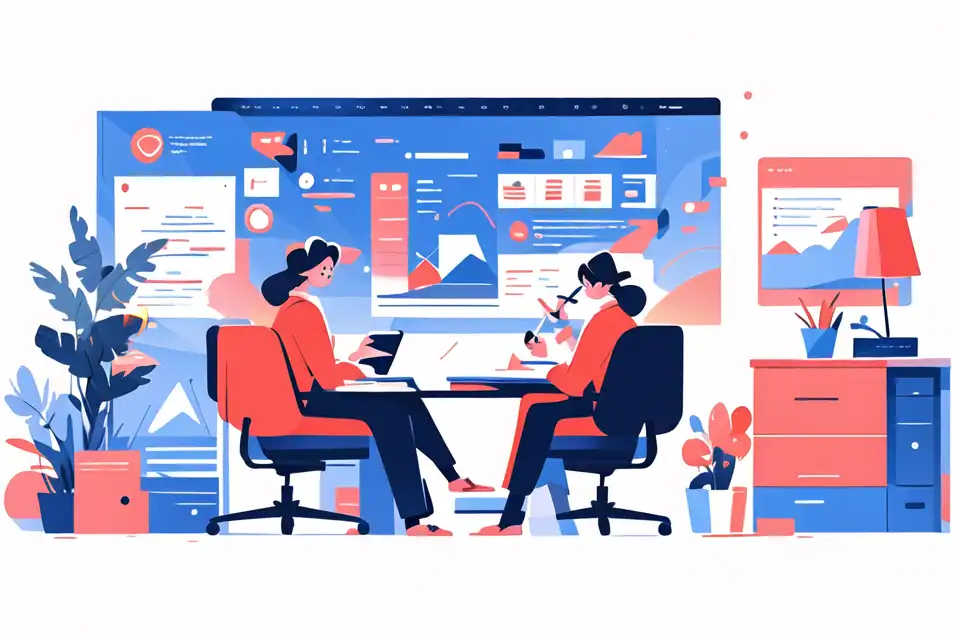Backward Goal Setting for Customer Success Teams
Unlock the power of backward goal setting for customer success teams with our comprehensive guide. Explore key goal setting techniques and frameworks to drive success in your functional team with Lark's tailored solutions.
Try Lark for Free
Before delving into the depths of backward goal setting for customer success teams, it is crucial to understand the fundamental principles and advantages of this approach. By leveraging this methodology, customer success teams can streamline their efforts, enhance productivity, and ultimately elevate the overall customer experience.
Leverage Lark OKR for enhanced goal setting within your team.
Understanding backward goal setting
Backward goal setting, often referred to as "reverse engineering goals," involves starting with a desired outcome and then working backward to determine the steps needed to reach that outcome. This approach provides a clear roadmap for organizations, ensuring that every action taken aligns with the overarching goals of the company. In the context of customer success teams, backward goal setting enables them to focus on the specific needs of their clients and tailor their strategies to achieve optimal results.
Benefits of backward goal setting for customer success teams
Enhanced Clarity and Focus
By adopting a backward goal-setting approach, customer success teams gain a comprehensive understanding of the desired outcomes, enabling them to direct their efforts and resources toward achieving those objectives.
Improved Customer Satisfaction
Backward goal setting empowers customer success teams to tailor their strategies in a manner that directly addresses the needs and expectations of their clients, ultimately driving higher levels of customer satisfaction and loyalty.
Strategic Alignment
This approach facilitates alignment between the goals of the customer success team and the overarching objectives of the organization, fostering cohesion and synergy across various departments.
Steps to implement backward goal setting for customer success teams
Step 1: Define the Desired Outcome
Begin by clearly outlining the specific outcomes or targets that the customer success team aims to achieve. This could include metrics such as customer retention rates, satisfaction scores, or successful product implementations.
Step 2: Identify Key Milestones
Once the desired outcome is established, break it down into incremental milestones or targets that need to be accomplished to reach the overarching goal.
Step 3: Determine Necessary Actions
With the milestones in place, identify the actionable steps and initiatives required to attain each milestone, ensuring that they are in line with the ultimate goal.
Step 4: Assign Responsibility and Accountability
Allocate responsibilities to team members for each action and establish clear accountability to ensure that progress is tracked and monitored effectively.
Step 5: Monitor Progress and Adapt
Continuously monitor the progress towards the defined milestones, and be prepared to adapt strategies based on insights gained during the process.
Learn more about Goal Setting for Teams with Lark
Common pitfalls and how to avoid them in customer success teams
Pitfall 1: Setting Unrealistic Goals
One common pitfall in goal setting is establishing objectives that are unattainable within the given timeframe or with the available resources. To mitigate this, it's crucial to conduct a thorough analysis of the team's capabilities and constraints before setting goals.
Pitfall 2: Lack of Alignment with Customer Needs
Failing to align the goals with the needs and expectations of customers can lead to inefficiency and missed opportunities. Regular interaction and feedback from customers can help in ensuring that the goals are aligned with their requirements.
Pitfall 3: Inadequate Performance Tracking
Without proper mechanisms for tracking performance and progress, it becomes challenging to gauge the effectiveness of the established goals. Implement robust tracking and reporting systems to stay informed about the team's performance.
Learn more about Goal Setting for Teams with Lark
Leverage Lark OKR for enhanced goal setting within your team.








